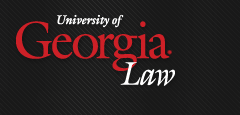Title
The Essential Holding of Casey: Rethinking Viability
Abstract
In Roe v. Wade, the Supreme Court ruled that the right to abortion continues until a fetus is viable, meaning it can survive outside the mother's womb. The joint opinion in Casey v. Planned Parenthood of Southeastern Pa. reaffirmed the viability standard in dicta. In neither opinion, however, did the Court offer an adequate rationale for the viability rule, an unusually permissive line when compared with abortion laws in other countries.
Reaching the point of viability can be said to result in a form of autonomy for the fetus, though one that is purely theoretical, since the fetus remains in the mother's womb. But the Court has never explained why autonomy matters in this context. Legal independence can coexist with physical dependence; indeed, in some circumstances, it is the very absence of autonomy that calls for the protection of the law. And even if we believed fetal autonomy relevant, the Court has not explained why this particular form of autonomy (rather than, for instance, genetic autonomy or the capacity for autonomous movement) carries decisive weight for constitutional purposes.
As Justice White noted long ago, the attributes leading to a finding of viability are legally and morally irrelevant to the strength of the state interest in protecting fetal life. Particularly telling is the medical evidence showing that viability varies with the race and gender of the fetus. The Court's introduction of racial and gender disparities into constitutional law underscores the absence of a principled rationale for the viability standard. The viability rule should be abandoned both because it lacks an adequate justification and because it interferes with the pursuit of legitimate state interests supporting regulation of late-term abortion procedures.
Repository Citation
Beck, J. Randy, "The Essential Holding of Casey: Rethinking Viability" (2006). Working Papers. Paper 62.
http://digitalcommons.law.uga.edu/fac_wp/62

This Faculty Working Paper has been updated and posted within the Faculty Scholarly Works Series. It is currently available here.